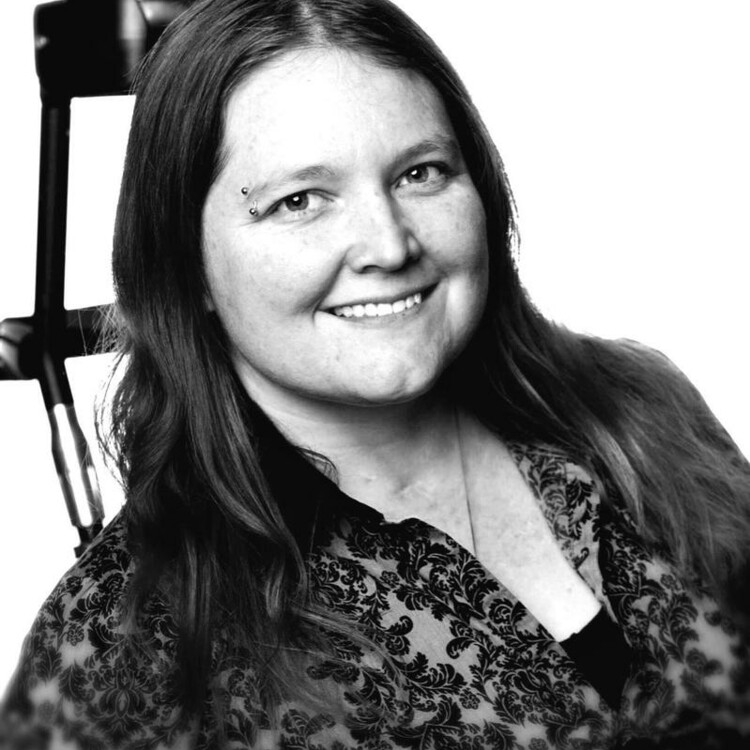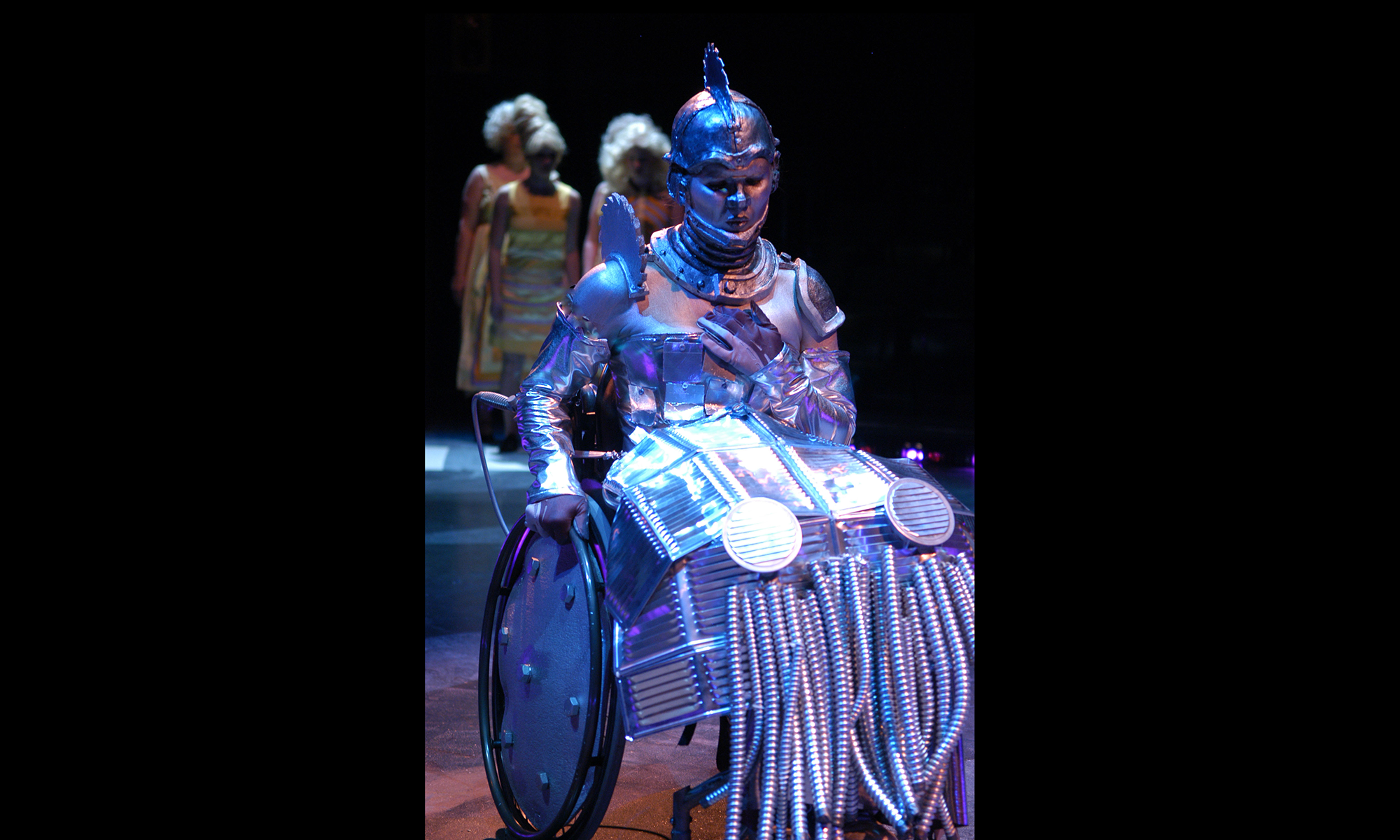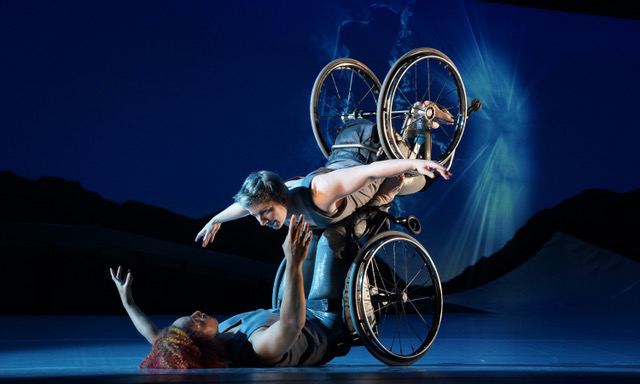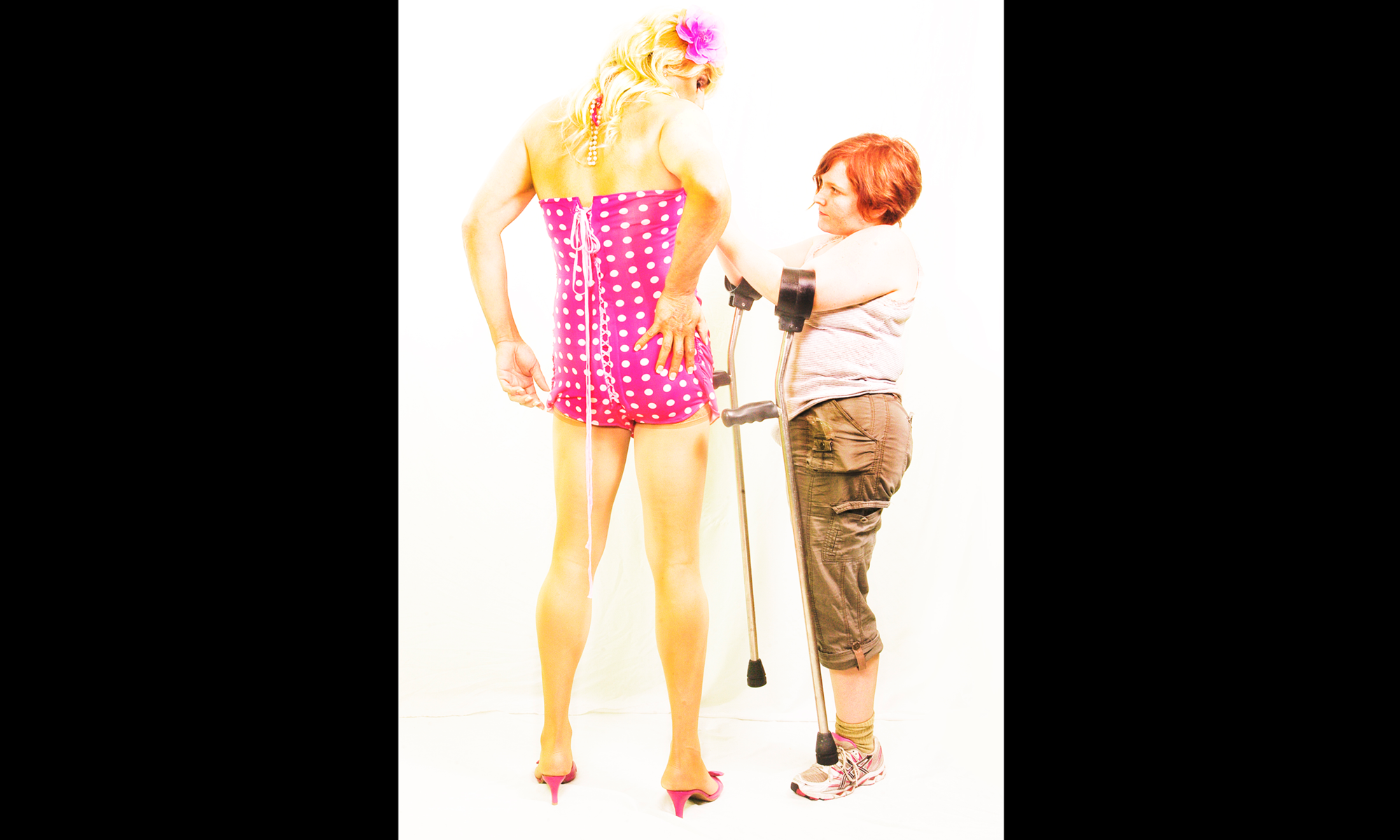This piece uses identity-first language, which is preferred for many disability activists. For example, this would mean calling someone a disabled person instead of person with disabilities.
American theatre is slowly waking to the idea that equity, diversity, and inclusion is not only a good idea but is essential to our art. Disabled characters should be crafted with nuance and depth, people of color need to be on our stages in non-appropriative fashion, women need to be treated equally and with respect, LGBTQ+ people need to be embraced and not used. Our stages and our audiences must represent the kaleidoscopic panoply of the human experience. While many theatre artists today acknowledge the power of diverse lived experiences, one thing we are still missing is disabled designers. Where are they, and why aren’t they employed?
Mallory: Michael and I started this conversation over a decade ago when I was working on my thesis, “The Inclusion of the Disabled Theatre Artist.” My advisor told me he had no idea how I was going to work in costume design with a disability. Not exactly the most supportive words, but this started me down a rabbit hole of disability consciousness. My awareness of my own internalized ableism was fleshed out as I read through Carrie Sandahl’s Bodies in Commotion and Paul Longmore’s collection of short essays called Why I Burned My Book. A world unfolded of disability injustice and metaphorical representation of disability in performance. Only one book was written by a disabled sound designer—Jim Lebrecht, whose most recent project is a documentary film called Crip Camp.








Comments
The article is just the start of the conversation—we want to know what you think about this subject, too! HowlRound is a space for knowledge-sharing, and we welcome spirited, thoughtful, and on-topic dialogue. Find our full comments policy here
My department has a huge impact on the successful navigation of all employees within our buildings at OSF. Most acutely our colleagues with mobility disability. We move tons of scenery and equipment every day. The coordination involved in moving that stuff every day blocks doors, hallways, exits and ties up elevators. Awareness of our colleagues access to our spaces requires constant vigilance. Normalization of that awareness is my current challenge. As folks navigate the needs of our rep, I am working with my department on recognizing and acting on access needs. Finding ways to encourage them to conduct their techs, shows, change overs and strikes with an added access lens.